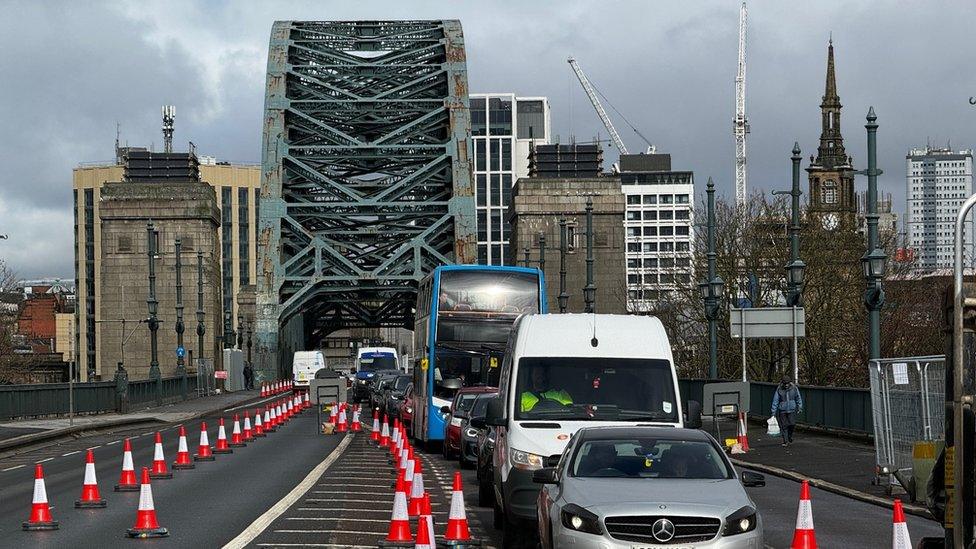Kittiwakes snub Tyne Bridge nesting 'hotels'
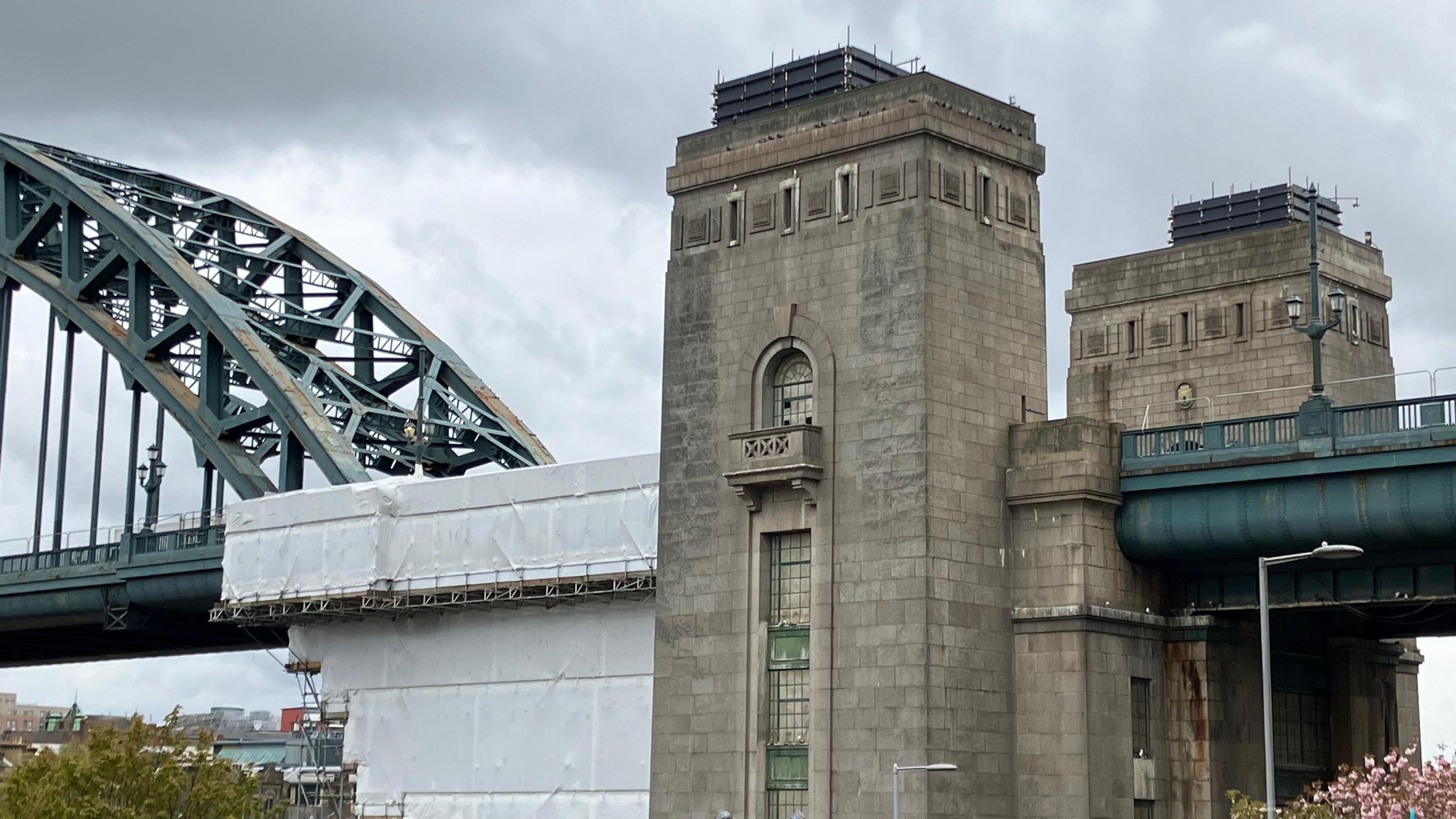
It is thought paint could be putting the kittiwakes off nesting in their specially-built "hotels", on top of the bridge's Gateshead towers
- Published
Kittiwake "hotels" put up on the Tyne Bridge during its restoration are not being used by the birds, a wildlife group has said.
Scaffolding is in place covering a section of ledges on the Gateshead side, where 160 pairs would usually nest and mate.
To compensate, specialist structures were built on the south towers, but ornithologist Dan Turner said there had been no sightings of the birds on them.
Newcastle City Council said it was "carefully monitoring" the kittiwakes during the bridge's four-year restoration project.
The Grade II* listed structure, which is undergoing a major upgrade ahead of its centenary in 2028, is home to more than 1,200 pairs of kittiwakes, making it the furthest inland breeding colony in the world.
Kittiwakes have been nesting around the quayside since the 1960s.
Each spring, the gulls return to build nests and breed on buildings and structures, including the Baltic arts centre.
'Not to their liking'
The council built two "hotels" from scaffolding poles and planks, with each one catering for 150 nests.
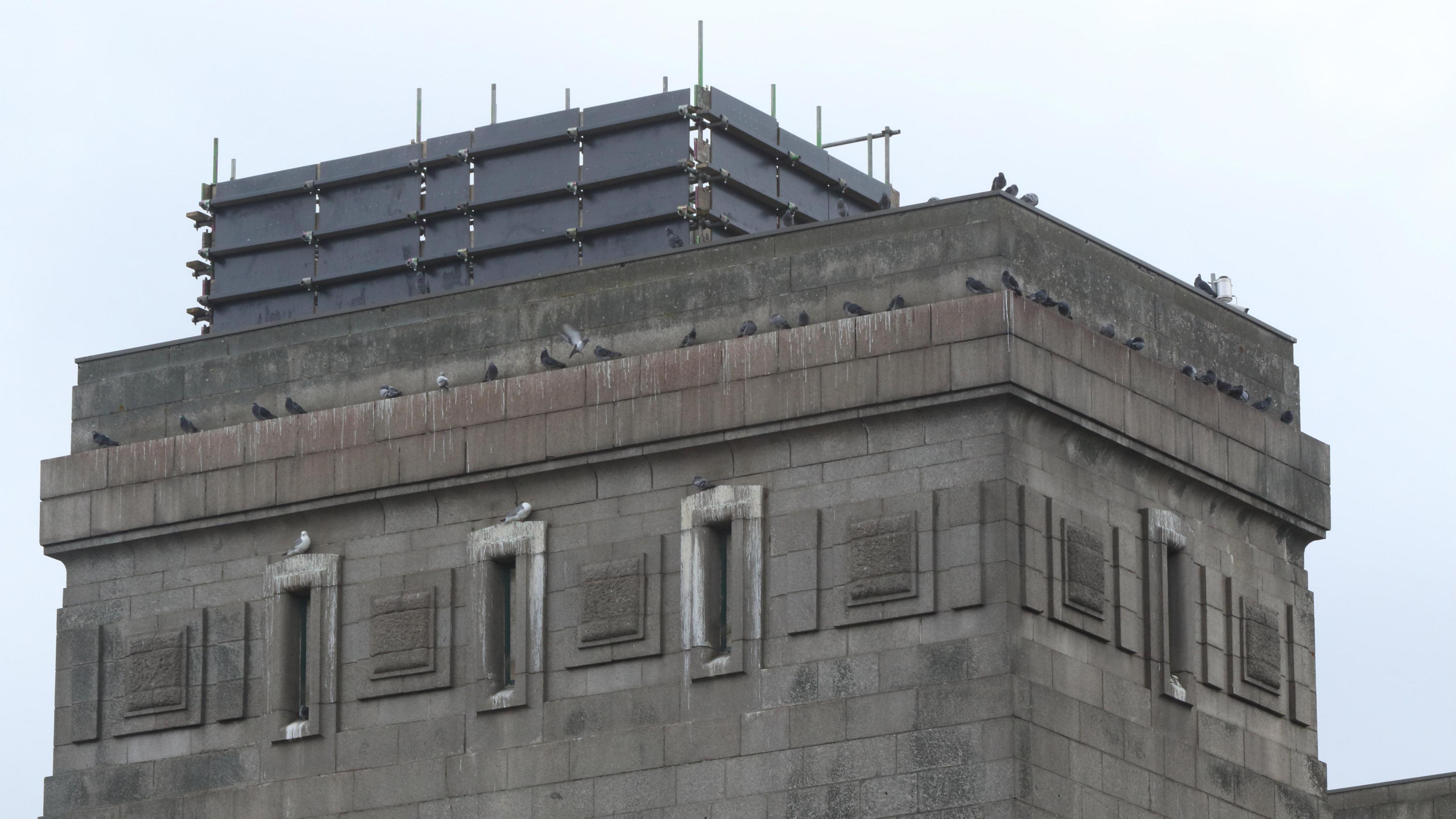
Ornithologist Dan Turner says it takes kittiwakes time to get used to their surroundings
Mr Turner, from the Tyne Kittiwake Partnership, has been surveying the number of birds since the hotels were put up in early February.
"I haven't seen a kittiwake on them yet," he told the BBC.
"They may not be quite to their liking, maybe the paint is off-putting, maybe they need to be more flush with the edging of the towers, that might be better for them.
"It takes kittiwakes some years to get used to ledges before nesting. So given time they might take to the hotels but they are only here for this nesting season and then they'll be moved to the north side of the river."
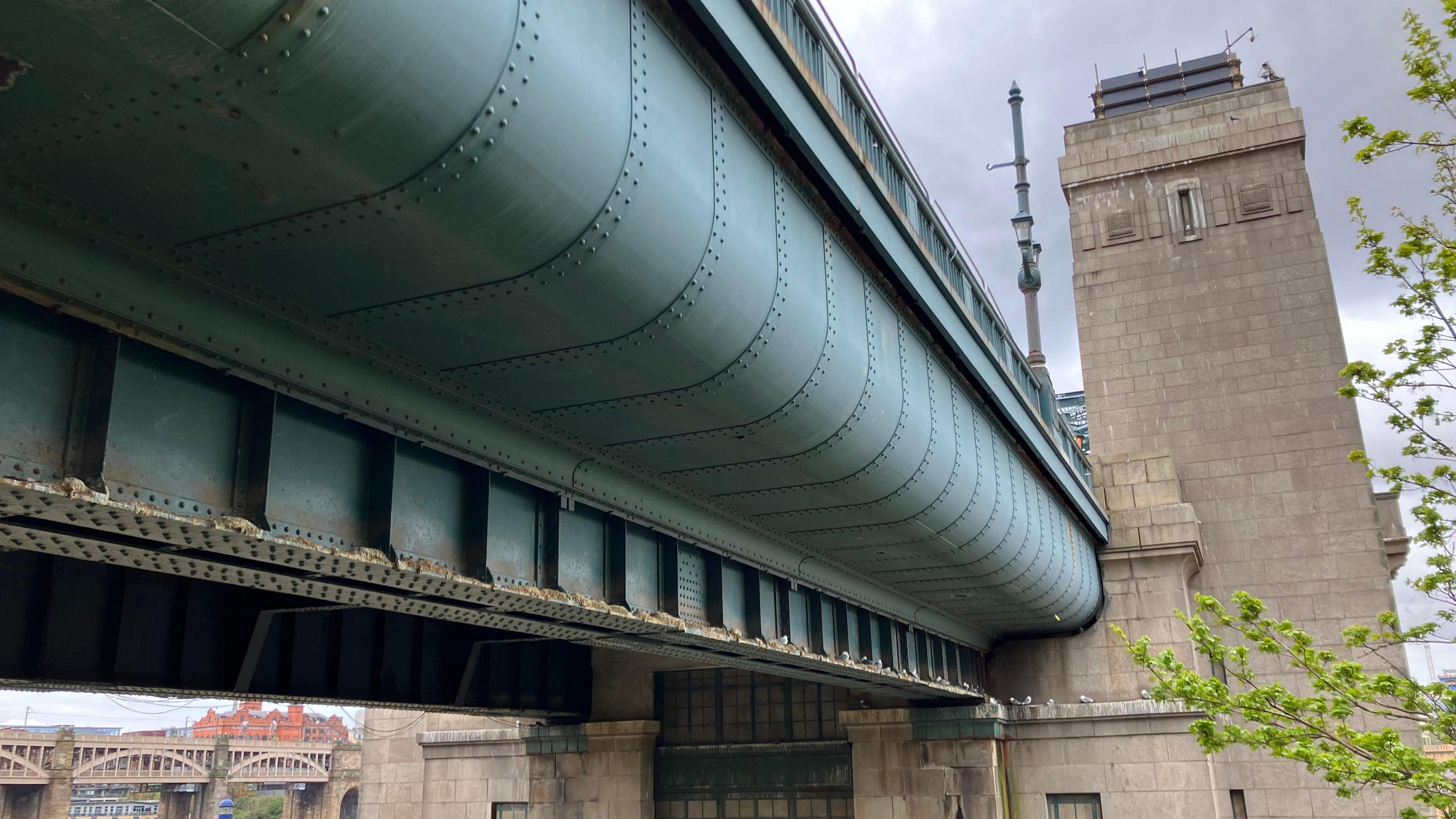
Kittiwakes are nesting on the ledges of Tyne Bridge
The first birds to return to the River Tyne area were spotted at the beginning of March and the numbers have continued to rise, with 945 kittiwakes present around mid-April.
Mr Turner added: "I suspect this year we'll see a reduction in occupied nests on the river because of the scaffolding on the bridge.
"It looks like those 162 pairs aren't going to nest, certainly not on the Tyne Bridge this year, so that will be a reduction by 100 or more nests."
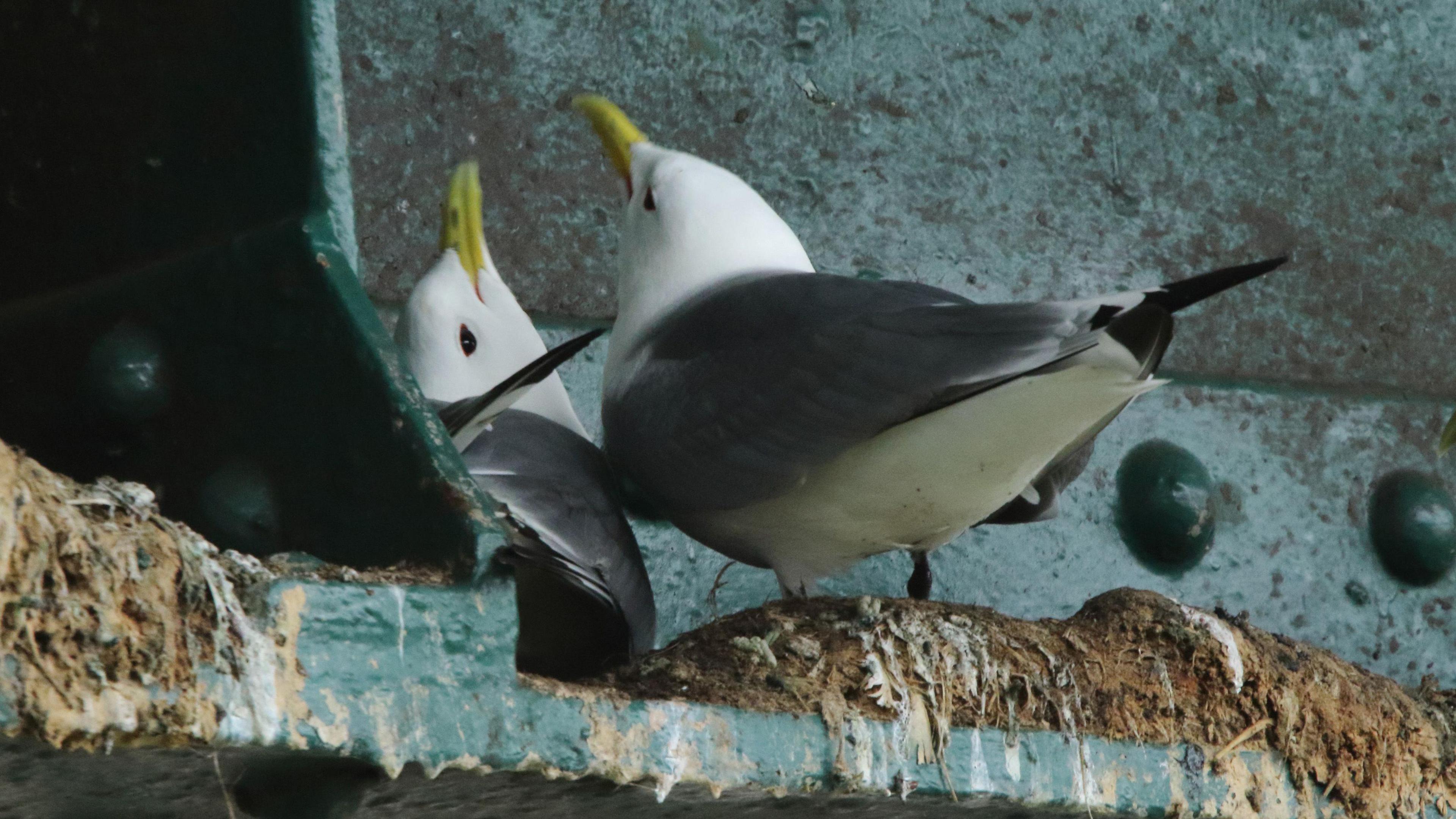
The kittiwakes have proved a tourist attraction in themselves
A Newcastle City Council spokesperson said the restoration programme had been developed in consultation with wildlife groups "to minimise disruption to this protected species".
“Nesting ledges have been installed on the roof of each Gateshead tower to provide alternative nesting provision while the scaffold is erected on the Gateshead side of the bridge," they added.
“This is a new and innovative approach, which we will carefully monitor, as well as continue to work closely with wildlife groups throughout the restoration programme.”
Follow BBC Newcastle on X (formerly Twitter), external, Facebook, external and Instagram, external. Send your story ideas to northeastandcumbria@bbc.co.uk.
Related topics
More stories from the North East and Cumbria
- Published4 April 2024
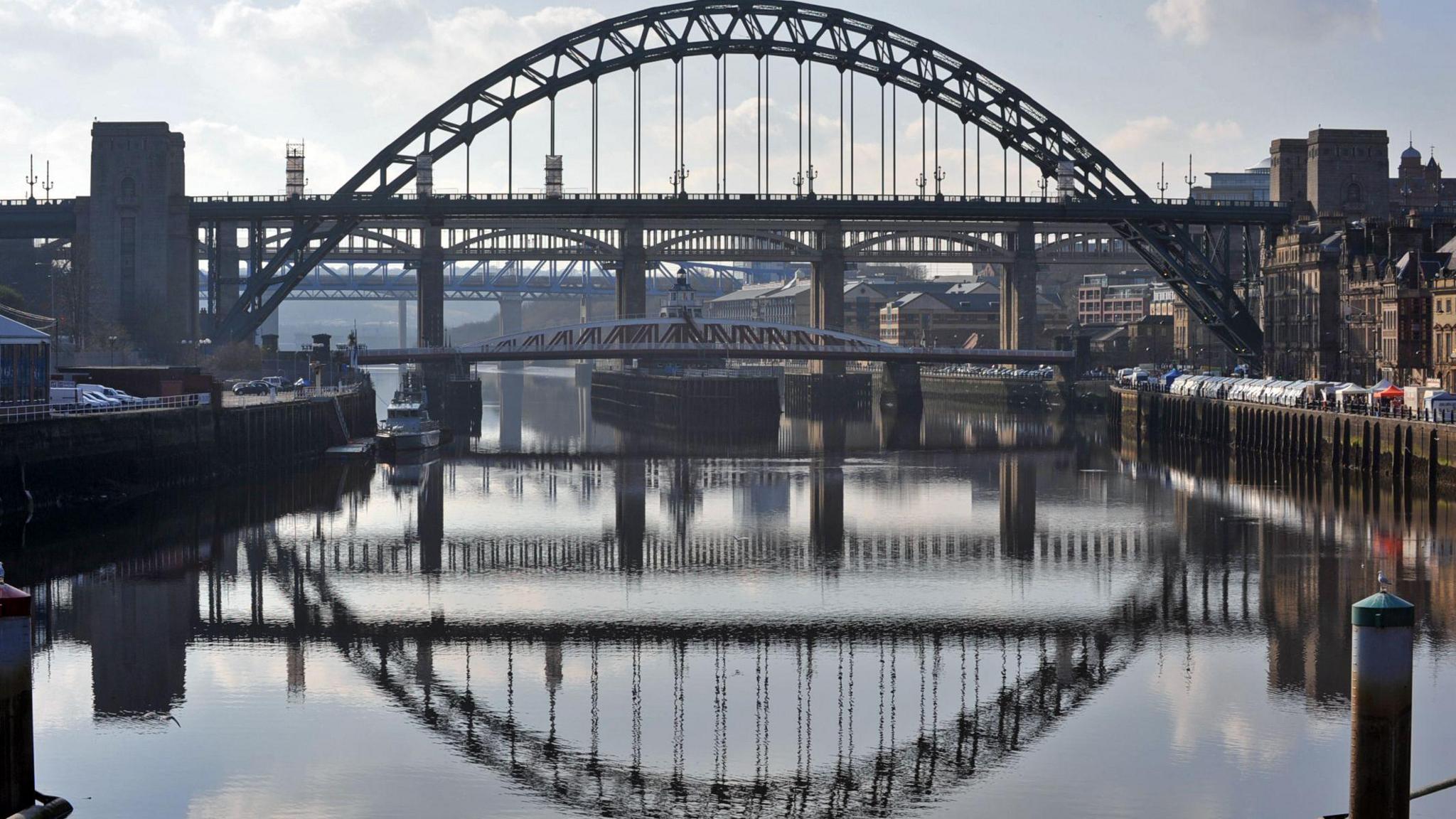
- Published4 April 2024
